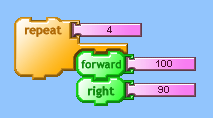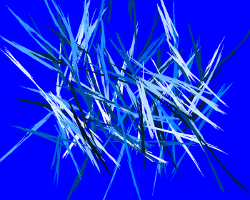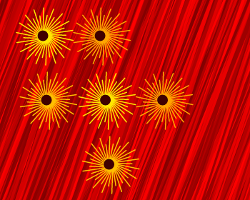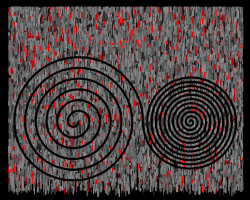TurtleArt
the art of programming,
the programming of art
A workshop led by Artemis Papert and Brian Silverman
| When: | November 22, 2025 10:00 AM to noon EDT |
| Where | everywhere via Zoom |
TurtleArt is a microworld for engaging with art through code. It allows you to explore art, turtle geometry, and math. It brings programming and art together. The main focus of TurtleArt is to create static, two dimensional images. In this workshop you will learn from the people who created, and are creating with TurtleArt.
if you are new to TurtleArt you will come away with a solid foundation for further exploration and creation. If you are an experienced TurtleArtist you will gain new insights and ideas for projects and explorations.
 TurtleArt
programs are built by snapping together blocks. Borrowing from the
earliest versions of Logo, its language is centered around Turtle
Geometry. The vocabulary of TurtleArt is small, therefore fluency
can be reached fairly quickly.
TurtleArt
programs are built by snapping together blocks. Borrowing from the
earliest versions of Logo, its language is centered around Turtle
Geometry. The vocabulary of TurtleArt is small, therefore fluency
can be reached fairly quickly.
In this workshop you will have lots of hands-on time to do your own explorations and create your own images. You do not need to have any previous programing experience. Just to be willing to try something new and creative.
Our aim is that at the end of the workshop you will be comfortable with the basics of TurtleArt and able to continue to explore on your own and with your students.
 |
 |
 |
About the workshop leaders:
- Artemis Papert is an artist creating art in both traditional, mainly acrylic and pastel, and digital media, using code as the medium. After a first career as a research biologist she retrained in the healing art of shiatsu. With an interest in dream and fairy tale interpretation and as a lifelong learner, she is currently training to become a Jungian psychoanalyst. Artemis has led TurtleArt workshops for a wide variety of groups in many countries.
- Since the late 1970s, Brian Silverman has been involved in the invention of learning environments for children. His work includes dozens of LOGO versions, LogoWriter and MicroWorlds among them, Scratch, LEGO® robotics, TurtleArt, the PicoCricket, and the Phantom Fish Tank. Brian has been a Visiting Scientist at the MIT Media Lab, enjoys recreational math, and is a computer scientist and master tinkerer. He once even built a tic-tac-toe playing computer out of TinkerToys.
Resources
- The TurtleArt website is the source for TurtleArt software, tutorials, and an extensive gallery of images.
- A Logo Primer is a brief introduction to Turtle Geometry and the Logo programming language.
- An Introduction to Logo and Turtle Geometry is a a series of brief video clips in which Seymour Papert introduces Logo and Turtle Geometry. The clips are excerpts from Seymour Papert: On Logo.
